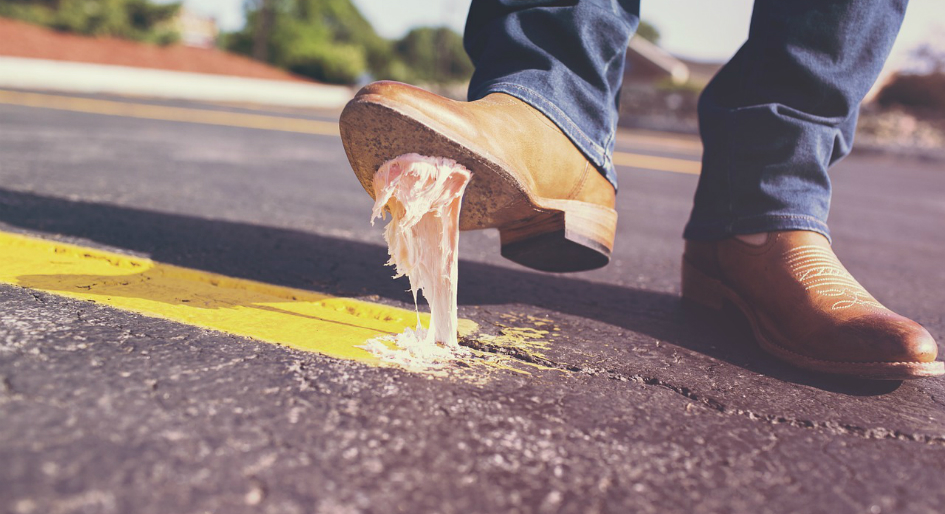A man looks around for a garbage can as he realizes the piece of chewing gum in his mouth has long lost its flavour. Seeing nothing in his immediate vicinity, he ducks his head and spits. Out flies the stale gum onto the pavement where it is later pressed down by a random shoe and cemented to its new home on the sidewalk. With time, the gum will no longer present a sticky situation, hardening and turning black with dirt.
According to the City of Toronto’s latest litter audit, gum is the largest small litter problem. It isn’t just unsightly but it can be problematic for facility managers as it reduces the respect for, and appearance of, a property. Gum litter also hurts the environment. Gum’s base components mean it isn’t biodegradable, so once it sticks to a sidewalk or street it needs to be manually removed.
Using a regular cold pressure washer and/or brute force to tackle this problem can do damage to sidewalks and streets. Some gum types also leave oil stains long after they’ve been removed, which a cold pressure washer can’t remedy.
Add in the headache of trying to clean up in an area with high foot traffic and it can be hard to do the job properly. High heat (steam) or extreme cold (dry ice blasting) both do a good job of removing gum litter. Steam is a time-consuming, ‘pinpoint’ clean but with its smaller machines and surface area, there is less disturbance to pedestrian traffic. Work can be completed during the day to avoid noise bylaws at night (when pedestrian traffic is less). Dry ice blasting, while also effective, is expensive and requires specialized equipment and practice. Unfortunately, neither of these options are practical solutions when tackling a large surface area, especially when asphalt is involved since it is easily disturbed during a forceful cleaning.
So, what’s the ideal solution to this problem? A hot pressure wash of the entire sidewalk or surface. This gets rid of the gum litter, cleans up the surface grime (because there is nothing worse than small clean patches leftover from where the gum litter used to reside) and brings the pavement back to a clean slate.
The best approach to removal is to set up a maintenance plan. This keeps a property looking clean year-round and gets gum litter off a surface while it’s still relatively fresh.
Still not convinced? A good pressure washing company should be willing to do a demonstration with their hot wash equipment before signing a contract.
Andrew Meades is the founder of Meades Restoration (formerly GTA Gum Removal). Meades began his career in the cleaning industry in 2010, removing chewing gum litter from Toronto sidewalks with a small Italian steam machine. He has since diversified his offerings and now restores architectural metal and building exteriors as well. Meades can be reached at 249-359-7733 or andrew@meadesrestoration.ca.







